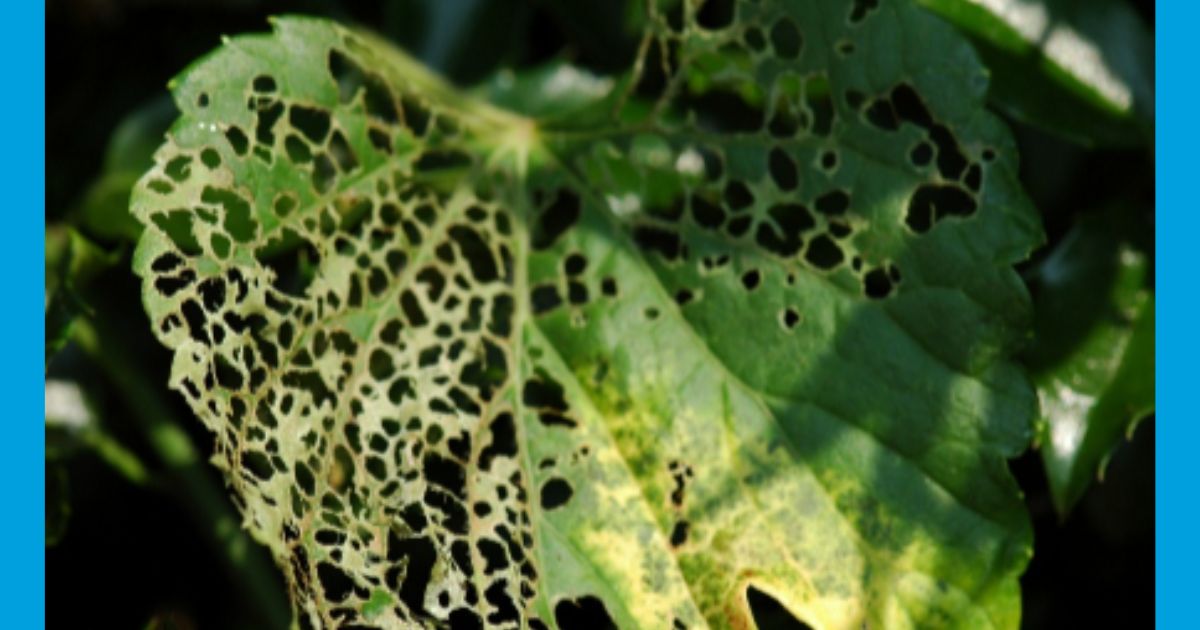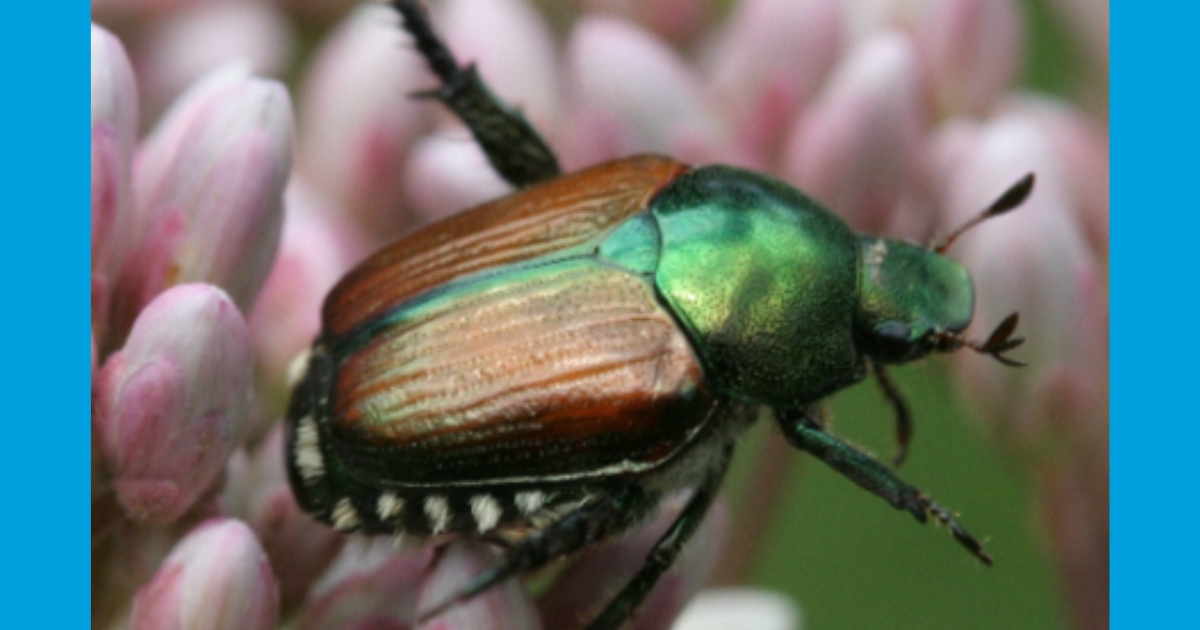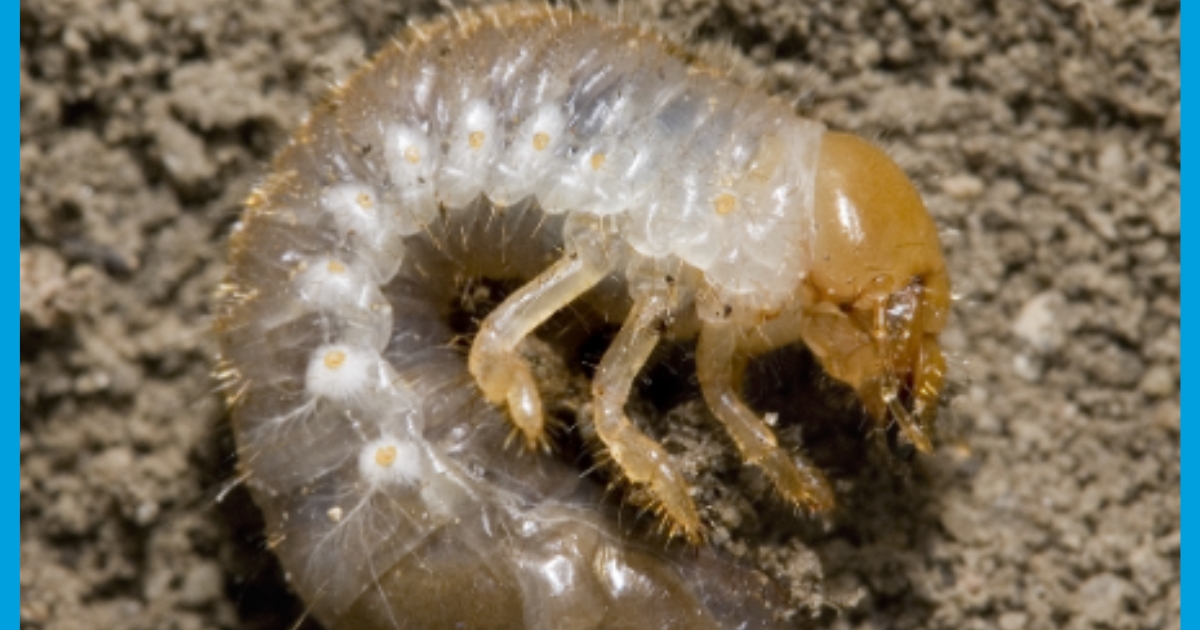
Japanese Beetles
Japanese Beetle
June 2025 | Written by: Skylar Foland and Brian Kunkel, UD Cooperative Extension Specialist
Description
The Japanese beetle, Popillia japonica, is an introduced pest of turfgrass and other plants. Japanese beetle grubs destroy turfgrass roots. Affected turfgrass turns brown and can easily be pulled up from the ground.
Adults have coppery elytra, green iridescent heads, and six white tufts of fur on each side of their abdomen. They feed on leaf flesh between veins, causing a lacey damage pattern called skeletonization. Damaged plants may turn brown or be entirely defoliated. Japanese beetles feed on over 300 plants, but some of their preferred plants are Japanese maple, roses, grapes, rose of Sharon, and cherry.

Life Cycle
Japanese beetles hatch from eggs in July and August and are part of the white grub complex. White grubs are comprised of many different species of scarabs. To identify Japanese beetle white grubs, you need to look for a “v-shaped” pattern of hairs on their abdomen near the anal slit. White grubs feed on turfgrass roots throughout the summer and overwinter in the soil. These grubs resume feeding in the spring before pupating.
Adult Japanese beetles first appear in late June or early July (914 – 2,410 GDD50) and feed for six to eight weeks. Feeding is generally finished by mid or late August. One female beetle can lay up to 60 eggs. The adults are attracted to the chemicals injured plants release, so infestations can quickly grow. The beetles will feed on both foliage and flowers. They start at the top of the plant and work their way down. Healthy trees may experience no permanent damage, but unhealthy or young trees may be stunted from feeding.


Biological Control
The winsome fly, Istocheta aldrichi, is a parasitoid of adult beetles. It lays its eggs on the beetles in the springtime. The larvae of the fly reduce their host’s ability to feed and lay eggs. The host is killed shortly after hatching. A wasp species, Tiphia vernalis, parasitizes the beetle grubs. Both species are established where Japanese beetles live.
Japanese beetle traps contain sex pheromones that attract adult beetles. These traps should not be used to control beetle populations, as they attract more beetles than they capture.
Cultural Control
Some plants are resistant to adult Japanese beetles, while others are susceptible to damage. Here is a table of some of the plants resistant to and susceptible to Japanese beetle feeding.
| Resistant | Susceptible |
|---|---|
| Red maple | Japanese maple |
| Boxwood | Norway maple |
| Hickory | Crape-myrtle |
| Ageratum | Hollyhock |
| Columbine | Dalia |
| Sweetgum | Hibiscus |
| Dogwood | Apple, crabapple |
| Coreopsis | Common mallow |
| Forsythia | Plum, apricot, cherry, peach |
Other Treatments
Mechanical control is effective for Japanese beetles in small populations. Handpick beetles from affected plants daily to reduce their numbers. Beetles may also be knocked off into a bucket of soapy water when populations are low.
Chemical controls are available for controlling this pest. Low-risk pesticides may be effective but require multiple applications. Please contact your local cooperative extension office for current insecticide recommendations.
References
All David Cappaert images are taken from InsectImages.org.
Susceptible and resistant plants taken from APHIS: Japanese Beetle | Animal and Plant Health Inspection Service.
UD Cooperative Extension
This institution is an equal opportunity provider.
In accordance with Federal law and U.S. Department of Agriculture policy, Cooperative Extension is prohibited from discriminating on the basis of race, color, national origin, sex, age, or disability.
